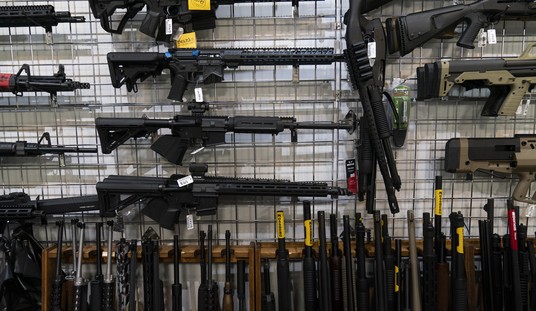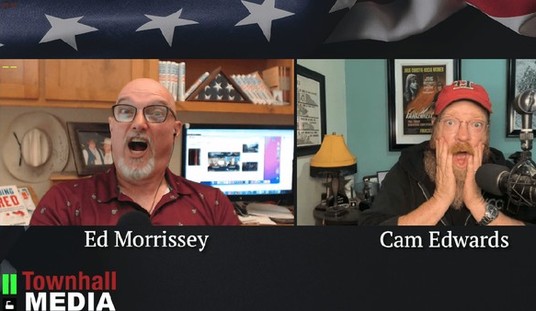Every now and again the Dickey Amendment is brought up during the debate over gun control and gun reform. Gun control advocates oppose the amendment, saying it prevents the government from providing funds to the Centers for Disease Control and Prevention (CDC) to study causes of gun violence. On the other side, supporters of the Second Amendment see it as a necessary restriction to prevent taxpayer dollars from funding gun control measures. However, there’s just one problem with the claim that the funding of gun violence research is prohibited or stalled due to the amendment. The Dickey Amendment, implemented in 1996 with the help of Rep. Jay Dickey (R-AR), did no such thing. At the time, funds were diverted from gun violence research to other areas of study due to blatant bias from researchers (more on that later).
The argument for studying gun violence is that by conducting these studies, the data can be used to inform politicians and the general public and allow the nation to take the right steps to reform gun laws and save lives. Most Americans and the NRA itself agree with this approach. But the Dickey Amendment continues to come under fire even though it explicitly states that funding cannot be used to advocate or promote gun control. Why is there so much outrage?
The answer: Misinformation.
In an article published early Thursday morning, Bloomberg explains that Congress is considering a couple of gun reform measures that will be a part of the Omnibus bill (emphasis mine):
Congress for the first time in years is poised to vote on gun legislation that represents incremental but symbolically significant steps on an issue that long has divided the nation.
…
One of the provisions would bolster reporting to the federal background checks system for gun purchases. A separate proposal would authorize $75 million this year for school safety training, metal detectors and other infrastructure, and to create systems for anonymous reporting of threats. For further years, it would provide $100 million a year until 2028.
Additionally, a legislative report accompanying the spending bill clarifies that the Centers for Disease Control and Prevention will have the authority to conduct research on the causes of gun violence — ending a 22-year ban on such research that has long been backed by the National Rifle Association.
The bolded section is a perfect example of misinformation, and the NRA did not let it slide. In a series of tweets, the NRA reassured gun supporters that the Dickey Amendment is still in place, that taxpayer dollars will not go to promote gun control and reiterated that the government did provide funds for gun violence research over the last few years.
🚨 🚨#FakeNews Alert @bpolitics want's you to believe that the #DickeyAmendment is included in the Omnibus spending bill. The #DickeyAmendment remains unchanged, taxpayer money to push gun control is still prohibited. #TheMoreYouKnow https://t.co/YSrdGuT7x1
— NRA (@NRA) March 22, 2018
Government-funded research on guns and violence has been going on for years. Reports indicate that the National Institutes of Health, which is covered by the same restriction, issued over $11 million in grants for such projects between 2014 and 2017.
— NRA (@NRA) March 22, 2018
The NRA fully supports research, both private and public, which examines the root causes of violence in our communities. What we do not support is using tax dollars to promote gun control.
— NRA (@NRA) March 22, 2018
Earlier this month, Chris W. Cox, the executive director for the National Rifle Association Institute for Legislative Action, wrote a piece for USA Today stating the NRA’s long-held position on gun violence research and explained why the Dickey Amendment came to be.
To be clear, Congress did not restrict the Centers for Disease Control and Prevention from studying firearms and violence. Instead, it restricted government funding from being used to advocate or promote gun control. In the 1990s, when this restriction was passed, that’s exactly what the CDC was doing — advocating for gun control under the auspices of “research.” One CDC official was even quoted in 1994 that he envisioned a public campaign to make guns like cigarettes, “dirty, deadly — and banned.”
The NRA’s position at the time, which has not changed, is that tax dollars should not be used to take sides in a policy debate. This violates the most basic principle of science, in which objective research should be the goal, rather than a biased policy position against individual firearm ownership.
But the question remains: If the Dickey Amendment does not prevent funding from going to the CDC for gun violence research, why is the political left calling for its elimination? Cox answers this very question. He states, “With this in mind, one might ask why gun control proponents are pushing to have the restriction eliminated. The answer is simple, and it has nothing to do with funding more research, but the desire to use the legitimacy of the CDC to push a political agenda.”
Why government funding has not been provided to the CDC to study gun violence is something Congress, not the NRA, needs to answer for, as nothing has kept it from doing so.









Join the conversation as a VIP Member